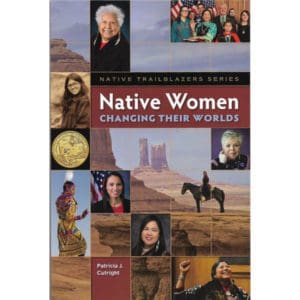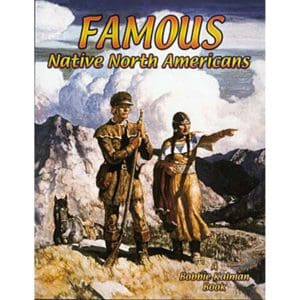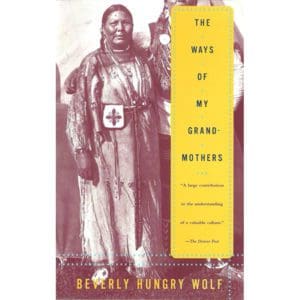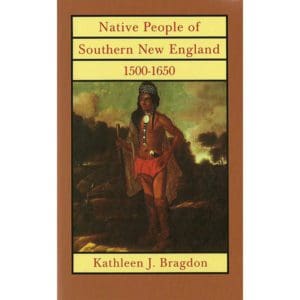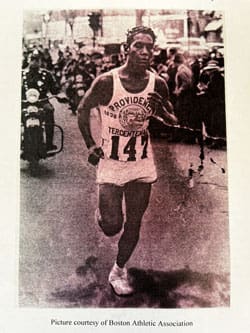
Indian Marathon Runner
By Grace M. Dowdell (Narragansett)
Permission to reprint was granted to Tomaquag Museum by author on August 29, 2008 and they have given The Wandering Bull, LLC permission to share the article on our website. To purchase a copy of this booklet you can visit the Tomaquag Museum online book shop.
Ellison Tarzan Brown, direct descendent of the once great Narragansett Indian Tribe, who in spite of his humble beginnings and obstacles placed in his path, was able to overcome these great odds to become the greatest marathon runner in his time. Winner of two Boston marathons, he became the number one contender for the three-man team selected to represent the United States in the 1936 World Olympics.
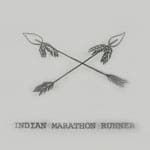 Tarzan was born of Otis and Grace Babcock Brown on September 26, 1914, in Potter Hill, Ashaway, Rhode Island. He was the second youngest of eight children. His father, being hospitalized for many years, laid the burden and responsibility of caring for eight children on his mother. In those days welfare was unheard of; thus poverty and hardship were constant companions in this household.
Tarzan was born of Otis and Grace Babcock Brown on September 26, 1914, in Potter Hill, Ashaway, Rhode Island. He was the second youngest of eight children. His father, being hospitalized for many years, laid the burden and responsibility of caring for eight children on his mother. In those days welfare was unheard of; thus poverty and hardship were constant companions in this household.
Because of his heritage, Tarzan was viewed as being “different” from other people whom he came in contact in the racing world. Tarzan was a free and independent person. He had the confidence within himself that he had the ability to perform certain feats when others doubted him. His father’s brother, Lewis Brown, a runner in his day, ran and won several six-day races. These races were just that, running continuously for six days; stopping only for a short time when necessary.
Growing up as a youngster, his natural ability in swimming and climbing trees won for him the nickname “Tarzan” from his boyhood companions. When twelve years old, Tarzan would run with the school kids. One day he saw Chief Stanton, a marathoner, running down the road. Curious, he followed him. Tarzan found that he could keep up with him and that he enjoyed running. With no shoes on, his feet became sore and blistered. Meanwhile, Chief Stanton finished the race, which was a twenty miler. He told Tippy Salimeno, his manager, that some kid had followed him all the way from Westerly. Salimeno, disbelievingly, asked, “What kid could have followed him all that distance?” Tarzan came in soon after Chief Stanton. Tippy asked him his name and told him to come see him when he turned sixteen. Two years later, Tarzan did just that. His first official race was in Arctic Center. He won the race and Tippy Salimeno became his manager and friend. His first race with Chief Stanton actually started Tarzan’s career. He lost the race by two minutes but gained the knowledge that he was a runner. From this point his running career moved steadily upward and as Tippy Salimeno puts it, “He won them all”.
Tarzan’s own method of training was to run ten miles and then walk. This way he didn’t need a rubdown. He had one problem and that was cramping. (Tarzan had the habit of going too fast and then cramping.) Further along in his career, this defect was reason for his loosing the “biggest” of them all, the 1936 Olympics. As Tippy Salimeno relates, a runner can run and win a 26 miler but put him in a ten and fifteen miler, they cannot do it; but as mention before, Tarzan won them all.
Tarzan’s main rivals, throughout his running career, were Leslie Pawson, winner of the 1933 B.A.A. marathon, and Johnny Kelly, winner of the 1935 B.A.A. marathon. On a hot day in July, 1935, Tarzan placed second to Pawson in a race at Douglas, Massachusetts, the time difference being 26.34 seconds.
On April 21, 1935, Tarzan ran his first marathon, finishing the last five miles barefooted, because his shoes hurt his feet. In this particular race, Tarzan placed 13th with Johnny Kelly winning the race. But from here on through his career, Tarzan moved steadily upward breaking records, winning time prizes if not winning the race. One such event occurred in Providence on September 16, 1935, when he broke the record of Johnny Kelly set a year before. The time being ten miles in 56 minutes and 20 seconds.
As stated before, Tarzan also broke records in short distances as kilometer races. These, as explained by Tarzan, are: six and one-half miles is equivalent to 10,000 meters; nine and one-half miles is equivalent to five kilometers; twenty miles is equivalent to twelve and one-half kilometers; twenty-five miles equivalent to fifteen kilometers.
In a national kilometer race, Tarzan again broke a record that was held in Newport on September 9, 1935. That was his second national crown in two weeks. The first being won in Boston two weeks previous. Tarzan won over his rival Leslie Pawson; by winning he established a world’s record. His time was one hour, fifty minutes and fifty-one seconds.
In training for a marathon, a participant must get used to running the same speed at the same time as in the race, Tarzan could run a mile in five and one-half minutes. In 1936, when he won the Boston marathon, Tarzan had broken all records. A story told by Pat Dengis, who held the national championship in New York, one of the greatest runners, claims that he, Pat, could beat anyone but Tarzan, because Tarzan had put an Indian sign on him. The end of this story is that Tarzan was pallbearer at Pat’s funeral. Pat Dengis never won a marathon in which he and Tarzan ran.
On April 15, 1935, Tarzan suffered an emotional crisis. Grace Babcock Brown died. His mother’s dying wish was that Tarzan run in the Boston marathon. As mentioned before, he did run but came in thirteenth, running the last five miles barefooted. His mother was Tarzan’s loyal supporter and friend. From this source came the inspiration and confidence which gave him more incentive to win. No sport is more killing than a marathon. There are very few good marathoners, and Tarzan was one of them. In his lifetime, Tarzan was the best and today still holds the title of two records.
In a January 22nd, 1936 local paper, “Its a miracle man the Olympic committee is looking for, not a runner.” Brown held out hopes that he would represent the United States in the Olympic games this year. If any youngster ever showed ability and the courage to make the team, Brown did. Yet, he has been overlooked although not altogether.
It was indicated to Brown that they might pick him if he won two marathons, each regulation distance within a period of two months. He has to win the Patriots Day marathon and a twenty six mile jaunt in Washington. Victory meant a verth to Germany.
Four have been picked as the tentative squad several weeks before; Johnny Kelly, Leslie Pawson, Mel Porter and Pat Dengis. Pawson has been watching the flying heels of Brown for six months. Brown now holds title to twenty and twenty-five kilometer championship runs and he set a record by winning both events. It was recommended that the four participate in the annual B.A.A. race from Hopkinton to Boston, April 20th, to show all were in top condition.
The first threat Tarzan presented to the committee was on April 5, 1936, when he finished second in an annual ten mile race sponsored by the Presentation Club in Boston. This may sound a bit confusing to some, but, the newspaper accounts state that although Tarzan came in second, Leo Girard winning the event by thirty-eight seconds, that Tarzan was the actual winner. Starting from scratch with Leslie Pawson, he won the time prize which fell thirty-eight seconds short of the course record. It was one of Tarzan’s best races. Pawson, favorite to win, placed sixth. Tarzan’s best time being fifty-five minutes and fifty-eight seconds.
The previous race presented a threat. The race, that really put Tarzan in the frontline for the Olympics, was held in Medford, Massachusetts in March of that year. Tarzan came in third. Johnny Kelly, from Boston, won the event three minutes ahead of Tarzan.
On April 20, 1936, astonishment fell on the racing world and the public in general. Tarzan won his first Boston marathon, winning the title from Johnny Kelly. As the result of this, he was now number one contender for the Olympic team. One person, Abe Butler , editor of the Westerly Sun, was not surprised. “We were confident of the Indian’s victory.” The first person Tarzan asked for after resting from the race was Abe Soloveitzik, sporting editor of the Sun, who really gave him a start in big time racing by raising funds to help defray his expenses.
Over night Tarzan became a hero, receiving acclaim state and nationwide. Despite all of this, Tarzan remained the same. New clothes may have changed his appearance but not Tarzan. He was poor and penniless. Through great fortitude and confidence within himself, because of his heritage, Tarzan was able to overcome the odds against him and raise to heights few attain.
Tarzan not only experienced the approval of fans, but also the adverse comments. One should remember that Tarzan began running by accident when he was twelve years old, and few hold a steady job at that age. Also to be remembered, at that age growing up in his teens, he was competing with veteran runners before the age of twenty. At nineteen he entered the first Boston marathon.
From a newspaper account: “Tarzan Brown, of our town, the United States hope in the coming Olympics marathon, apparently has three weaknesses. The first is his craze for running, the second his love for ice cream and the third, his enthusiasm for movies. And to make his cup filled to overflowing, Jack Findlay, the manager of the local theatres, is going to give to the youth a two year pass to both the United Sand Central Theatres. Then he can go nightly to see his favorite flicks.
Without the running craze, Tarzan would not be where he is today; and it was through his success as a runner that he acquired his first job. Looking over the different accounts, some of the other runners were not employed. His manager, Jack Farrington, was unemployed before he took over the training of Tarzan, which was a fortunate turn of events for Tarzan and Farrington.
Winning the Boston marathon, first man on the Olympic team, brining fame to his state and to his country, as well as, the wish to taste like’s simple pleasures that came as a natural birthright to the manor born, and which are denied to others, is not an uncommon desire; but the natural wish of a person who is still young at heart.
A July, 14, 1936 Providence paper speaks of the publicity bill of Tarzan’s cost as being fifty dollars. It related how much was spent for an orchestra to play at a celebration to honor Rhode Island’s tercentenary. This was a big year. Thousands of dollars being spent for profitless expenditures; yet the cost of the nation-wide fame and publicity Tarzan brought to the city and state was only fifty dollars for winning the marathon. This celebration was to honor the landing of the Pilgrims at Plymouth Rock in Massachusetts. Who greeted Roger Williams when he stepped off the boat? A one hundred per cent American. Who three hundred years later, brought more fame to Rhode Island? Another one hundred percent American. The cup, which cost ninety dollars, could not be included in the total cost as it was not given until after the race.
At this time a word should be said about Tarzan’s classification, which means he was not a paid runner. He was an amateur. The only money received was his travel money. Therefore, the trophies Tarzan won were sold to feed his family. He did not enter the game for the money but for the sport and love of running. With all things considered, regardless of what people thought, Tarzan remained his own man. There were times he was asked to participate in civic affairs; but if he had not seen his friends for a while, he would perform the task asked to do, and then leave, apologizing, that he was going down to South County to play and sing with his friends. Men’s applause was not important to him. More important, was his friend’s respect.
On April 21, 1936, Tarzan was selected as one of the three member team for the Olympics to be held in Germany in August of that year. He was the first one hundred percent American to win this honor since 1907 when Tom Longboat was the selectee. He lost the race because of leg cramps in the nineteenth mile. Three incidents happened that contributed to his losing the race. First, when he arrived overseas, the first thing officials did was to separate the runners from their trainers. Because Tarzan demanded that he and Farrington remain together, a question about international procedure was reopened. The rule was that associate coaches who accompany the teams, were not allowed to handle the athletes. The coaches assigned to Tarzan overran him, forcing him to run more than he felt he should have. He complained to the officials, but to no avail. Thirdly, the first time he saw the course was the day of the race. Three days before the day of the race, Tarzan complained that his leg “felt funny,” however, the coaches said everything was all right. The day of the race Tarzan felt confident, but at the nineteenth mile. the cramp overtook him. Forced to drop out, he sat there, various thoughts running through his mind. He was saddened more of the thought of disappointing his friends back home, who had placed such high hopes on his winning. Tarzan could have has the cramp rubbed out, but then, he would have been disqualified according to international rules.
Sitting there, Tarzan “felt awful”. He had no friends there, no one to help him. He didn’t know where Jack Farrington was and his leg was killing him. He had never had a cramp like this before. Defeat is a bitter pill to swallow, but most of all, he thought his running days were over.
But Tarzan came back to America to win race after race. The first race Tarzan ran in Bridgeport soon after his return. This was important because this proved to himself and the world that he was still in the game. In his words Tarzan said “Life ain’t a bed of roses, ” although he still wished for a better break in Germany.
On November 13, 1936, Tarzan entered the hospital for a hernia removal. The doctors said he couldn’t run for six months; Tarzan said he would be ready to run by Thanksgiving. He was unable to keep his promise. On November 18th, he married his childhood sweetheart, Ethel Wilcox. From this union, four children were born.
To mention some of the feats performed by Tarzan as related by Tippy Salimeno; On October 12,1936, Tarzan ran a twenty-six miler in Port Chester, New York, coming in three hundred yards ahead of Pat Dengis. After catching a sleeper that night to Manchester, new Hampshire, he was ready the next day to run at noon and to win his seventh race since his return from Germany. The sport’s world called it sn iron man stunt. He established himself as one of the greatest runners over any distance ranging from ten to thirty miles in the world.
A comment in the newspaper was: “He is a funny kid, this Indian boy, who made history in the sports world in that short space of time. It’s a serious thing for an athlete to overexert. Tarzan said he was going to run two races and he did. As he commented, “No one can beat me now.” and no one did.” Also a quote made by a sports editor was, “Knowing Tarzan well, I know when he sets his heart or mind on anything it’s like trying to stop the rising tide to change his ideas.”
Another time in Syracuse, New York, ninety-five degrees in the shade, most runners went out as in an ordinary race. Tippy made Tarzan take it easy. As the fourteenth mile, he caught the first man walking, the second man did not come in until twenty minutes later, after Tarzan had showered and dressed. As Tippy relates, seldom is there a minute between runners, and he had never seen anything like it.
At the 1939 World’s Fair, Tarzan ran a fifteen mile race; the next day he ran in Boston barefooted. Johnny Kelly said, since Tarzan had run barefooted, he thought he would try it. He did. At the end of the race, Kelly had to be picked up bodily and carried to the dressing room, because of sore and bleeding feet.
Today, Tarzan has been placed in four halls of fame. The last honor was on December 1, 1973, in Kansas National Indian Athlete Hall of Fame in Mexico. He is still receiving recognition for his great and unusual feats. Over his span of racing, he participated in two hundred and fifty races., running until thirty-one years of age. His last race was at Ottawa, Canada in 1943. He holds title to national championship shorter races. Tarzan was the only man in 1939 who held six title records at the same time. At the present time he holds two title records for the fastest time between checking stations.
Looking back on his life, Tarzan at age of sixty comments; if he knew than what he knows today, he would have won the Olympic because he would have been in condition. He enjoyed the sport of the game. To him, also, it was a job. Receiving only traveling money he would bum rides to save money for home and then winning the race would sell whatever prize received to care for his family.
Today as Tarzan oysters and cuts wood for a living, he is still his own man, doing what he enjoys most. To most people his life has been a failure economically and materialistically. But this depends with which perspective one views his life.
Sitting contently in his home, he appears to be satisfied. No resentment is evident. Whereas, others have to be surrounded by things or trophies to be reminded of their past accomplishments, Tarzan, within himself, feels he was the world’s greatest runner in this time.
The last paragraph of this story is Tarzan finished his earthly race August 23, 1975. In death he may perform the greatest feat of all and that is – as voiced by many – drawing all tribal members closer together – to work together to build a living monument for future generations.
Hawunshech (Farewell)
In Memory of Ellison Meyers “Tarzan” Brown, I would like to share a paper I wrote.
As there will be no footnotes, my information came from interviewing Tarzan, his wife Ethel, Uncle Hazard, Tippy Salimeno, researched old Narragansett down, and an old scrapbook that contained newspaper clippings from Westerly Sun, Boston Globe and New York papers.
I intended to return and tape Tarzan’s conversation when he told of his 1936 crossing to Germany; how he met Queen Elizabeth and Hitler. We never kept that appointment, but I hope this will enlighten those who are ignorant of his career. This may help us to understand ourselves and the way we think. So it will only be the good that will live on now he is gone and not be interred in his bones.
-Grace M. Dowdell
Items You May Like

